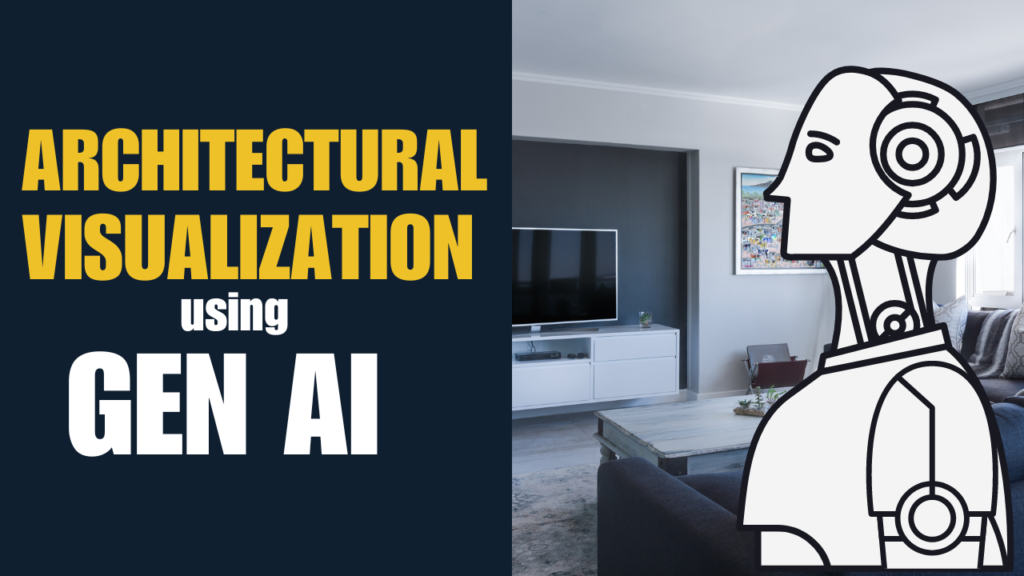Architectural Dreams Unveiled: Generative AI’s Role in Visualizing Designs

Architectural dreams come to life through the transformative influence of Generative AI, offering a new dimension to design visualization. This article delves into how Generative AI unravels the potential of architectural visions, bridging the gap between imagination and reality. By leveraging AI algorithms, designers can bring intricate details to life, allowing clients and stakeholders to visualize projects before construction even begins. As we explore the impact of AI in unveiling architectural dreams, we witness how these technologies enrich the creative process, foster informed decision-making, and lay the foundation for innovative design solutions.
From Blueprints to Pixels: How Generative AI Transforms Architectural Visualization
The evolution of architectural visualization takes a groundbreaking turn with the integration of Generative AI. This article delves into how AI transcends traditional blueprints and sketches, transforming them into immersive visual experiences. By infusing designs with AI-generated elements, architects can provide clients and stakeholders with a photorealistic glimpse into their projects. We explore how Generative AI enhances communication, streamlines design iterations, and accelerates decision-making. From conceptualizing spaces to walking through digital renderings, we witness how AI breathes life into architectural visions, blurring the lines between imagination and realization.
Designing the Future: The Impact of Generative AI on Architectural Concepts
Generative AI is propelling architectural design into the future, redefining the very concepts that shape our built environment. This article delves into how AI algorithms collaborate with architects to reimagine traditional design approaches. By generating innovative ideas and pushing boundaries, AI serves as a catalyst for groundbreaking concepts. We explore how this collaboration sparks creativity, encouraging architects to explore uncharted territories of design thinking. From avant-garde structures to sustainable urban planning, we uncover how Generative AI fuels a revolution in architectural concepts, fostering a harmonious partnership between human ingenuity and algorithmic inspiration.
Creating Visual Wonders: Generative AI’s Contribution to Architectural Aesthetics
Generative AI emerges as an artist’s tool, co-creating architectural wonders that captivate the eye and imagination. This article delves into how AI’s algorithms collaborate with architects to elevate the aesthetics of their designs. By generating intricate patterns, textures, and details, AI empowers architects to craft visually stunning buildings that resonate with elegance and innovation. We explore how Generative AI introduces diversity in design, enabling architects to experiment with novel forms and aesthetics. From facades adorned with AI-inspired motifs to interiors imbued with algorithmic elegance, we unveil how AI’s contribution to architectural aesthetics enriches the urban landscape with visual marvels.
Efficiency Redefined: How Generative AI Streamlines Architectural Visualization Workflows
Efficiency takes center stage in architectural visualization workflows, thanks to the transformative role of Generative AI. This article delves into how AI optimizes and accelerates design processes, reshaping the way architects bring ideas to life. By automating tasks such as layout optimization and material selection, AI empowers architects to focus on creative decision-making. We explore how this efficiency revolution translates into faster design iterations, enhanced collaboration, and reduced project timelines. From concept sketches to final renders, we witness how Generative AI redefines efficiency, allowing architects to navigate complex design challenges with agility and precision.
Exploring Spaces Virtually: Generative AI’s Influence on 3D Architectural Models
Virtual exploration of architectural spaces takes on a new dimension with the intervention of Generative AI. This article delves into how AI algorithms reshape 3D architectural models, offering immersive experiences that transcend traditional representations. By infusing models with AI-generated details, architects can immerse clients and stakeholders in lifelike virtual walkthroughs. We explore how Generative AI blurs the line between physical and virtual reality, providing architects with a dynamic tool to communicate their visions. From interactive presentations to real-time adjustments, we witness how AI’s influence on 3D architectural models transforms the way spaces are explored, experienced, and understood.
Sculpting Urban Landscapes: How Generative AI Shapes Cityscape Visualization
Urban landscapes become the canvas for Generative AI’s artistic influence, reshaping the visualization of cityscapes. This article delves into how AI algorithms collaborate with urban planners and architects to create vibrant and sustainable urban environments. By simulating various scenarios and design options, AI enables stakeholders to envision the future of cities with precision. We explore how Generative AI empowers decision-makers to balance functionality, aesthetics, and sustainability, resulting in harmonious urban landscapes. From skyline transformations to green infrastructure integration, we unveil how AI’s role in cityscape visualization fosters informed urban planning and design.
Realism Redefined: The Power of Generative AI in Photorealistic Architectural Renders
The pursuit of photorealism in architectural visualization reaches new heights with Generative AI’s capabilities. This article delves into how AI-driven techniques redefine the boundaries of realism in architectural renders. By simulating lighting conditions, material properties, and atmospheric effects, AI-generated renders mirror the intricacies of the physical world. We explore how Generative AI bridges the gap between imagination and perception, enabling architects to present designs with unparalleled authenticity. From interiors bathed in lifelike lighting to exteriors blending seamlessly with their surroundings, we witness how AI’s power in photorealistic renders elevates the visual storytelling of architectural projects.
The Architect’s Partner: How Generative AI Enhances Design Validation and Exploration
Generative AI emerges as a trusted partner in the architect’s toolbox, enhancing design validation and exploration. This article delves into how AI collaborates with architects to validate design decisions and experiment with innovative ideas. By generating alternative design options and predicting performance outcomes, AI becomes an invaluable asset in the decision-making process. We explore how Generative AI’s insights empower architects to make informed choices, optimize spatial arrangements, and enhance functionality. From sustainability assessments to structural feasibility studies, we witness how AI’s role as the architect’s partner fosters a dynamic design journey that embraces creativity and pragmatism.
Ethics and Authenticity: Navigating the Boundaries of Generative AI in Architecture
As Generative AI transforms architectural visualization, ethical considerations emerge that require careful navigation. This article delves into the ethical dimensions of AI’s role in architecture, addressing questions of authenticity, ownership, and creativity. We explore the delicate balance between human agency and algorithmic influence, as well as the ethical implications of using AI-generated elements in designs. From acknowledging AI’s contributions to preserving architectural authenticity, we unravel how architects and industry stakeholders navigate the complex landscape of ethics in the age of Generative AI.
Conclusion

As we conclude our exploration of Generative AI’s role in architectural visualization, we stand witness to a transformative journey that is reshaping the very fabric of design and creativity. The symbiotic dance between human ingenuity and algorithmic precision is paving the way for new realities in the world of architecture.
From unveiling architectural dreams through immersive visualizations to redefining the concept of design concepts themselves, Generative AI is rewriting the rules of the game. It contributes to architectural aesthetics by creating visual wonders that captivate the eye and evoke emotions. The efficiency of architectural workflows is redefined, empowering architects to focus on what truly matters – innovative design.
Generative AI’s impact extends to the virtual exploration of spaces, offering unprecedented insights into 3D models and urban landscapes. The pursuit of photorealism finds its ultimate ally in AI-generated renders, creating visualizations that blur the line between the digital and the tangible. The architect’s journey is transformed with AI becoming a valuable partner, assisting in design validation and exploration.
However, as AI’s influence grows, ethical considerations become paramount. Navigating the boundaries of authenticity and ownership requires industry-wide introspection, ensuring that the convergence of technology and creativity remains respectful of both human and algorithmic contributions.
In the nexus of ethics, aesthetics, and innovation, Generative AI emerges as a formidable tool that empowers architects to push boundaries, bridge gaps, and craft new realities that were once confined to dreams. As we move forward, the marriage of architecture and AI invites us to imagine, innovate, and redefine what is possible in the realm of architectural visualization.


Wow, superb blog format! How long have you ever been blogging for? you made blogging look easy. The total glance of your site is excellent, as neatly as the content!